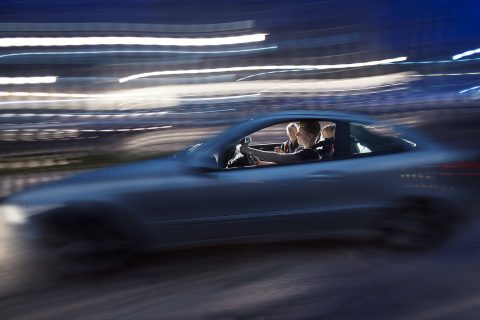
Drugs in traffic
Operating a vehicle while under the influence of drugs or intoxicating medicinal products increases the risk of accidents. The driver does not necessarily always notice the impact of drugs on their driving ability. Don’t drive a car or any other vehicle if you have taken drugs.
Use of drugs endangers traffic safety
Narcotic substances affect judgement, observation, the ability to react, reaction times and motor functions. Accidents caused by drugs and medicinal substances resemble accidents caused by alcohol because the physical and psychological impacts that led to the accident are often similar.
Mixed use of narcotic substances has increased. The combined effects of different substances may be unpredictable and sometimes extremely strong, which further increases the risk of accidents.
It is difficult to assess the exact composition or concentration of illegal substances bought on the street. Their effects on the user’s body and driving ability may therefore come as a surprise.
Drug-driving
Finland has not set limits similar to the pro mille limits of alcohol for the different narcotic substances on the basis of their possible dangers in traffic. The law has zero tolerance for drugs.
Medicinal products for which the driver of the vehicle has a prescription are an exception. If the products are considered to affect driving, the limit for drug-driving may be exceeded. Check whether there is a red triangle on the packaging of the medicine you take. If you have taken such medicine, don’t go driving because the medicine impairs your reactions.
Drug-drivers caught by testing
The quick test used by the police gives an indication of whether there is a narcotic substance in the driver’s body. More specific information on the substance and its amount is obtained from a blood test. In Finland, exact limits for driving while seriously intoxicated have not been determined for drugs.
In 2023, more than 5,700 cases of drug-driving were reported to the authorities, which is about one third (36%) of all cases of driving while intoxicated. (Source: National Police Board)
How do the different drugs affect ability to drive?
The impacts of narcotic substances vary depending on the substance used. They may depress the central nervous system (depressants) or stimulate it (stimulants) or may cause hallucinations (hallucinogens).
Depressants (cannabis, opioids)
slow down reactions, distort understanding of distances and speed, and impair concentration.
Stimulants (amphetamine, methamphetamine, cocaine)
may increase risk taking and aggressive behaviour and distort visual observations.
Hallucinogens (LSD)
may cause visual and auditory hallucinations that impair the ability to estimate speed and distances.
The most commonly misused medicinal products are sedatives and sleeping medications, such as benzodiazepines.





